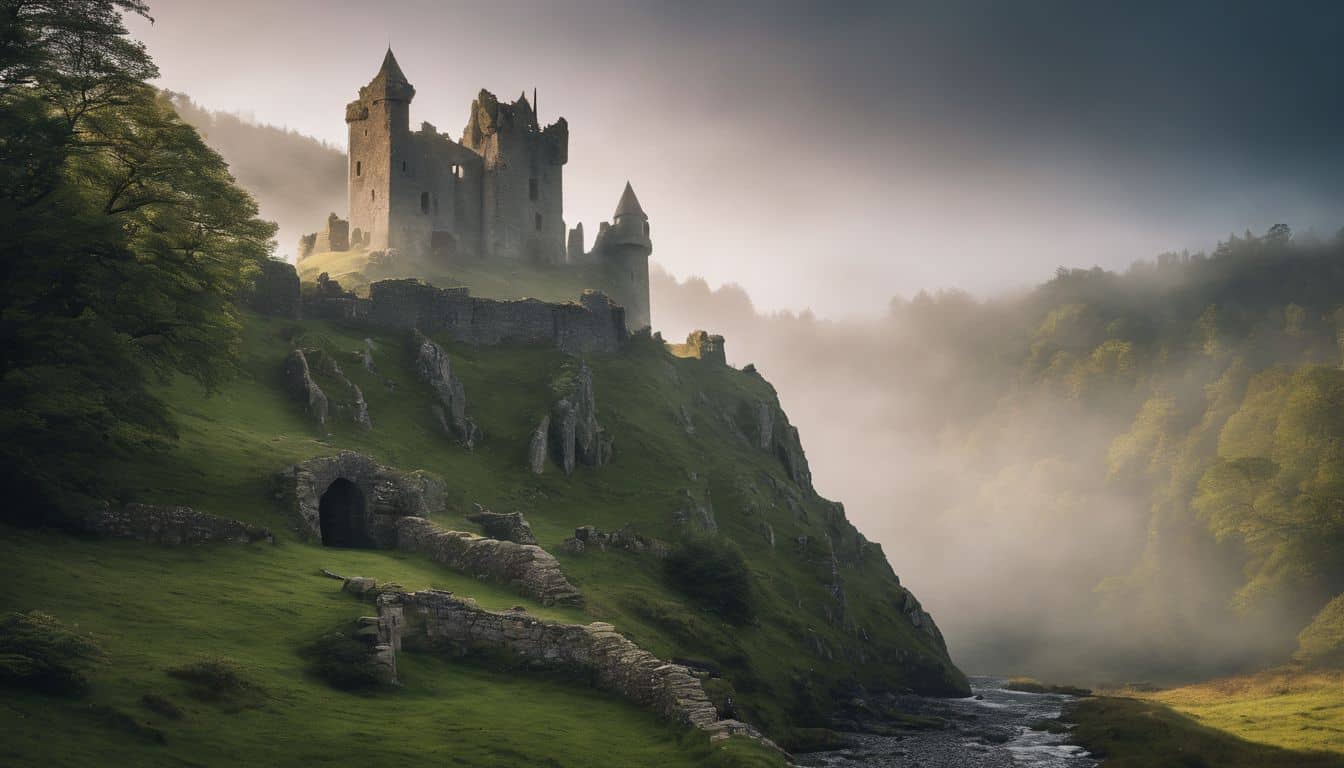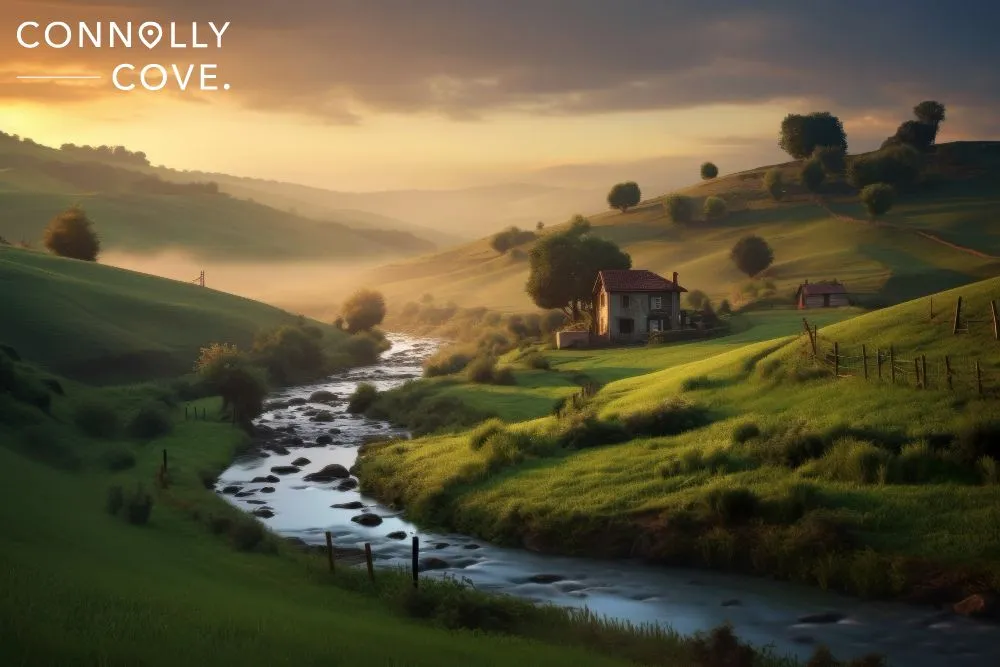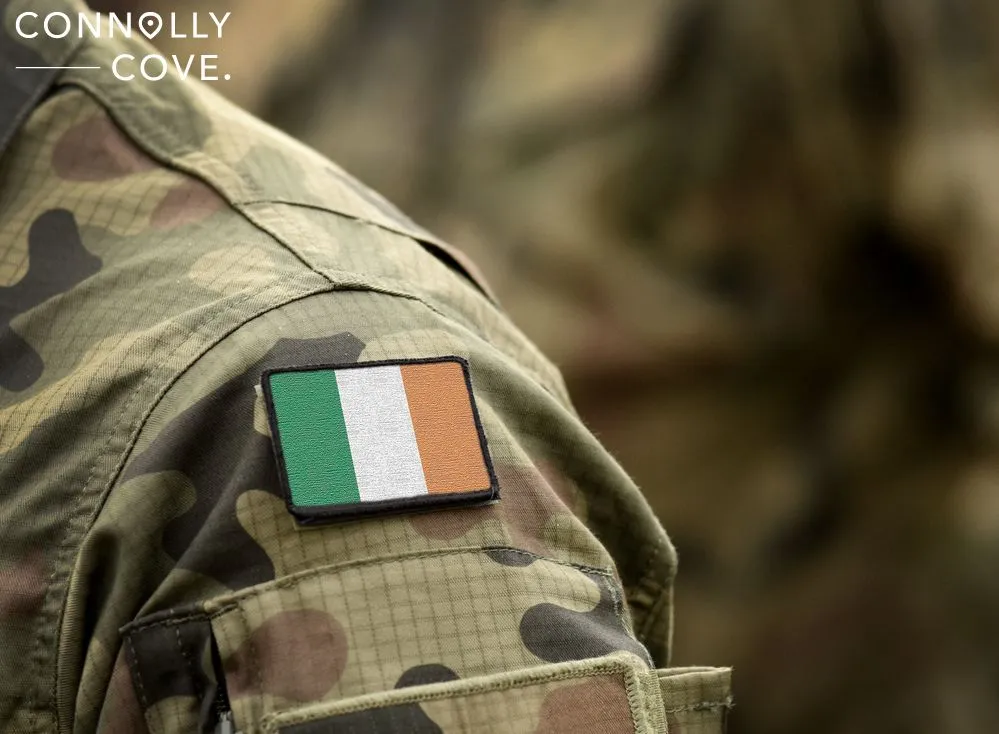The Rich History of Ireland: From Ancient Times to Independence

Updated On: April 20, 2024 by Yasmin Elwan
Embarking on a journey through the captivating annals of time, we delve into the riveting tapestry that is the history of Ireland. This storied island, nestled in the North Atlantic, has been witness to a remarkable narrative of triumphs, struggles, and enduring resilience. As we trace the footsteps of ancient Celts, delve into medieval lore, and navigate the complex currents of colonialism, the history of Ireland unfolds as a vibrant epic.
From legends etched in stone to pivotal moments that shaped nations, this exploration promises a rich tapestry of events, personalities, and cultural evolution. Join us as we unravel the captivating tale that has sculpted the identity and spirit of the Emerald Isle across the ages.
Prehistoric and Early Medieval Ireland (10,500 BC–800 AD)

During this period, Ireland saw the transition from the Stone Age to the Bronze Age and then to the Iron Age, with significant cultural developments such as the arrival of Christianity and Viking invasions.
Stone Age to Bronze Age
Long ago, Ireland was home to people in the Stone Age. They lived here about 10,500 years back! They made tools from stone and bone. Over time, they learned how to work with copper too.
This started what we call the Bronze Age. The new tools helped them in many ways. Farming got easier than before. People began trading these items as well. So, life changed a good deal during this time on the island of Ireland!
Iron Age
During the Iron Age in Ireland, which lasted from around 500 BC to 400 AD, there were significant changes and developments in society. The Celts had a strong influence during this time, introducing new technologies like iron tools and weapons.
They also brought with them their distinct culture and language, Gaelic. This period saw the rise of powerful tribal kingdoms and an increase in trade networks throughout Ireland. People lived in hill forts for protection and built impressive monuments like the stone forts at Dun Aengus on Inishmore Island. Archaeological discoveries from this time provide valuable insights into ancient Celtic life and customs.
The Iron Age was also marked by encounters with other civilisations. The Vikings began raiding Ireland’s coasts towards the end of this period, bringing about further cultural exchange and influencing Irish society. These interactions would shape the future history of Ireland.
Arrival of Christianity
The arrival of Christianity in Ireland is a significant event in the country’s history. It happened during the early medieval period, around 400 AD. With the introduction of Christianity, Irish society experienced a major transformation.
Monasteries were established all over the country and became centres of learning and culture. The monks preserved ancient texts, created beautiful illuminated manuscripts, and contributed to the spread of literacy.
Saints like St. Patrick played a vital role in Christianising Ireland and converting the population to Christianity from their pagan beliefs. The arrival of Christianity had a profound influence on Irish art, literature, language, and society as a whole.
Viking Invasions
The Viking invasions of Ireland, spanning from the late 8th to the 11th century, left an indelible mark on the island’s history. These seafaring Norse warriors, known for their longships and exploration, first arrived on Irish shores as raiders seeking wealth and resources. Initial sporadic raids evolved into more permanent settlements, especially in coastal regions. Viking influence was notably established in places like Dublin, Waterford, and Wexford, where they founded urban centres and trade hubs.
While the Vikings initially encountered resistance from local Irish kings and chieftains, a complex intermingling of cultures ensued. The Vikings integrated with Irish society, adopting aspects of Gaelic customs and, in turn, contributing their maritime expertise, trade connections, and craftsmanship. Notable historical events include the Battle of Clontarf in 1014, where the Irish king Brian Boru defeated the Viking and Irish forces, leading to a decline in Viking influence.
The legacy of the Viking invasions persists in Ireland’s archaeological sites, language, and urban development. Dublin, founded by the Vikings as “Dubh Linn,” meaning “Black Pool,” stands as a testament to their enduring impact on Ireland’s cultural and urban landscape.
Anglo-Norman Conquest
The Anglo-Norman Conquest was a significant event in Irish history. It took place in the 12th century when the Normans invaded Ireland from England. They were led by Strongbow, an Anglo-Norman nobleman.
The conquest resulted in the establishment of Norman control over large parts of Ireland and marked the beginning of centuries of English influence on the island. The Normans introduced feudalism to Ireland and built castles and fortifications throughout the country.
This period saw changes in land ownership, with many native Irish losing their lands to Norman settlers. The Anglo-Norman Conquest had lasting effects on Irish society, language, and culture, shaping its history for centuries to come.
Modern Ireland (1536-present)
As Ireland progressed into the modern era, the island underwent a transformative journey marked by political struggles, social upheavals, and the quest for self-determination. The complexities of Modern Ireland encompass the Union with Great Britain, a chapter defined by political integration but marred by unrest.
The subsequent pursuit of Home Rule and the tumultuous War of Independence shaped the nation’s destiny, culminating in the establishment of the Irish Free State. However, this achievement was shadowed by the partition, leading to the creation of Northern Ireland.
This section delves into the multifaceted narratives that unfolded during these pivotal moments, exploring the intricate threads that wove the fabric of Modern Ireland.
Union with Great Britain
The era of Union with Great Britain in Irish history spans from 1801 to the early 20th century, signifying a period of profound political and constitutional change. The Act of Union in 1800 saw the amalgamation of the Kingdom of Ireland with the Kingdom of Great Britain, creating the United Kingdom of Great Britain and Ireland.
This union aimed to address political and economic challenges, fostering closer ties between the two entities. However, it was met with resistance from various Irish factions, who saw it as a subjugation of Irish autonomy. The subsequent years witnessed social and economic disparities, exacerbating existing tensions.
The Catholic Emancipation Act of 1829 granted political rights to Catholics, but issues of land reform and national identity continued to fuel discontent. The union ultimately became a focal point for Irish nationalism and paved the way for subsequent chapters in Ireland’s quest for independence.
Home Rule and War of Independence

During the late 19th and early 20th centuries, Ireland experienced a strong desire for self-governance known as Home Rule. This movement aimed to establish an Irish parliament and give Ireland more control over its own affairs.
However, disagreements between different factions within Ireland, as well as resistance from the British government, hindered progress towards Home Rule.
The situation escalated further with the outbreak of World War I in 1914. While many Irish people volunteered to fight for Britain, others saw this as an opportunity to push for complete independence.
The Easter Rising of 1916 marked a significant turning point in the struggle for Irish freedom. Although initially suppressed, it inspired further support for independence among the population.
Following the war’s end, Ireland experienced increased political tension and violence. The Irish War of Independence broke out in 1919, pitting nationalist forces against British authorities.
Guerrilla warfare tactics were employed by groups such as the Irish Republican Army (IRA) in their fight against British rule.
Negotiations eventually led to the signing of the Anglo-Irish Treaty in December 1921. While it established an independent Irish Free State within the British Commonwealth, disagreements emerged regarding Northern Ireland’s status and other contentious issues like whether to recognise loyalty oaths to declare allegiance with Britain or not.
Partition and Northern Ireland
Partition and Northern Ireland are important aspects of Ireland’s modern history. In 1921, the Anglo-Irish Treaty led to the partition of Ireland into two separate entities: Northern Ireland, which remained part of the United Kingdom, and Southern Ireland, which became an independent state.
This division was based largely on religious and political differences between the mainly Protestant Unionists in the north and the predominantly Catholic Nationalists in the south.
The partition decision sparked decades of conflict known as “The Troubles,” characterised by violence and tension between these two communities. The Good Friday Agreement in 1998 finally brought about a ceasefire and paved the way for power-sharing between Unionist and Nationalist politicians in Northern Ireland.
How Has the Early History of Ireland Affected the Country’s Culture?
Irish history has played a pivotal role in shaping the rich and distinctive culture of the country. The amalgamation of various historical influences has contributed to Ireland’s unique identity. Here are some key ways in which Irish history has formed the country’s culture:
- Celtic Heritage: The ancient Celtic roots of Ireland have left an enduring mark on its cultural expressions. The Celts, with their myths, legends, and artistic traditions, laid the foundation for the distinctive character of Irish culture.
- Christianisation: The arrival of Christianity in the 5th century, led by figures like St. Patrick, profoundly influenced Irish culture. Monasteries became centres of learning and art, preserving manuscripts and contributing to the island’s Christian identity.
- Viking and Norman Influences: The Viking invasions and subsequent Norman conquest introduced new architectural styles, urban planning, and social structures. These influences added layers of complexity to Irish culture.
- English Colonisation: English colonisation, particularly the Tudor and Stuart plantations, had a lasting impact on Ireland. The imposition of English laws, language, and landownership patterns contributed to a complex cultural dynamic.
- Language: The Irish language, Gaelic, is a crucial element of Irish culture. Efforts to revive and preserve the language reflect a desire to maintain a distinct linguistic identity.
- Literature and Arts: Irish literature, from ancient sagas to modern works, often reflects the country’s tumultuous history. Literary giants like W.B. Yeats and James Joyce have contributed to Ireland’s global cultural influence.
- Music and Dance: Traditional Irish music and dance, with roots in folk traditions, serve as vibrant expressions of cultural identity. Instruments like the fiddle and bodhrán are iconic in Irish musical heritage.
- National Struggles: Ireland’s history of resistance against English rule and the struggle for independence has become a central theme in its cultural narrative, inspiring literature, art, and music.
Who invaded Ireland in history?
Ireland faced many invaders in its past, like Vikings and Normans during the Anglo-Norman invasion, and others who influenced its sovereignty till the Anglo-Irish Treaty led to Irish Independence.
Who were the Celts, and how did they impact Irish history?
The Celts arrived in Ireland from mainland Europe around the 5th century BC and brought with them their language and culture. They established a Gaelic society with a hierarchical system of kings, druids, and warriors. Celtic mythology and art flourished during this period, and the Irish language developed from its Celtic roots.
What were the causes and consequences of the Great Famine in Ireland?
The Great Famine, which occurred between 1845 and 1852, was a devastating period in Irish history. A potato blight caused widespread crop failure, leading to widespread hunger and starvation. Over a million people died, and over a million more emigrated. The Famine had a lasting impact on Irish society and politics.
Ireland’s history is incredibly rich and complex, spanning from ancient times to its fight for independence. From the arrival of Christianity to Viking invasions and the Anglo-Norman conquest, Ireland has experienced numerous cultural influences. The struggle for Irish independence remains a significant part of its history, showcasing the resilience and determination of its people.






